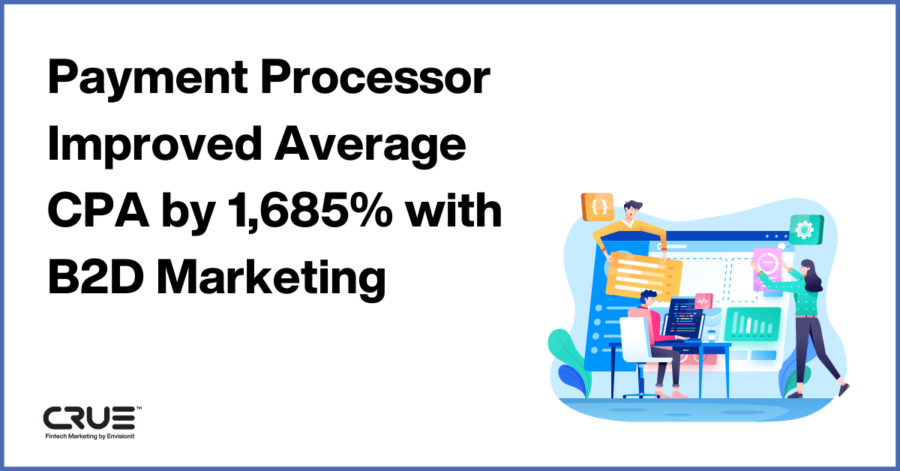Properly document your 2023 fintech marketing strategy with a framework that lets you strategically pivot your business
Most marketers approach goals with a “set it and forget it” mentality. Meaning, they lock in their OKRs for the year, but neither track against them often enough, nor adjust them for what’s working and not working.
But here’s something they don’t teach you in marketing school: Having a solid goal-oriented plan with built in flexibility is only half the battle. How you plan and assess progress gets you a seat on the Iron Throne.
How to plan
At Envisionit, we leverage a Vision Traction Organizer (VTO) methodology that is based on a framework created by Gino Wickman, author of Traction. It started as an internal exercise for our organization to track towards our own annual goals, and then we thought, “Hey, our clients are going through the same exercise. Maybe they could benefit from it too.” So we modified it and made it a part of our own onboarding process with our clients.
Tune into this episode of the Fintech Marketing Strategy Hour podcast to hear CEO & Founder of Envisionit Todd Brook break down the VTO method step-by-step.
Establish annual objectives & 90-day priorities for your team
Every organization we’ve worked with has had some idea of what needs to be true at the end of a fiscal year. Sometimes, it’s really straightforward, like:
- Deliver 5,000 qualified leads
- Hit 5x for return on marketing spend
- Deliver a cost per acquisition of $100 (this could mean that you have to justify your top-of-funnel marketing efforts by being able to hit that $100 lead)
There’s one thing you might notice about these goals: they’re really specific, and more importantly, they’re measurable.
- Did you generate those users? Yes or no?
- Did you hit that CPA target or deliver that 5x ROAS?
You get the picture.
What you don’t see is, “we’ve positioned ourselves to become a leader in the market.” What does that mean? When you get to the point where you can step back and truly assess your performance, everything you accomplish (or don’t) should be obvious.
If your goals are nebulous to begin with, you’re going to have a hard time trying to understand why you didn’t achieve them and explaining this reality to the powers that be.
Creating a VTO
Setting your team up for success
Proper planning should also galvanize your troops. Do they know what is literally required from them to make it happen? Also how do you ensure you’re always tracking towards those milestones and holding them accountable? It starts with the right plan, but it comes to fruition through regular assessment and discussion. Are you on track? Are you off track? If so, why?
At its core, creating your own VTO boils down to the following steps:
- Establish specific annual objectives that are measurable.
- Define 90-day priorities for your team that specifically ladder up to achieving your objectives—if it’s not measurable and it doesn’t ladder up to your end outcomes for the year, it shouldn’t be on the list. As a general rule, individual team members should not have more than three priorities.
- If you’re working with a hybrid model, also align with your agency partners on their 90-day priorities in service of you hitting your annual objectives, and document them.
Once you’ve got this in place, how do you create more productive and efficient meetings that keep your team’s eye on the outcomes? It’s all about sticking to the agenda. Even if the team initially finds the structure a little rigid, they’ll eventually get on board when they realize it’s intended to help them be more impactful in their roles. Trust us.
Zero-based budgeting
At Envisionit, we’re strong believers in zero-based budgeting for building your marketing budget. This includes both how to lead an organization, and also how to plan for media and performance marketing investments.
Zero-based budgeting effectively starts from zero. It involves analysis of each granular need of the company versus the incremental budgeting increases associated with traditional budgeting. Essentially, this allows for a strategic, top-down approach to analyze the performance of a given program or project. No longer will you need to commit to unrealistic and arbitrary budgets to support your needs almost a year in advance.
The process is simple, but effective:
- What is the specific and measurable result I am looking to achieve this fiscal year? Ideally isolate one core metric. Is it revenue, cost per download, profit, etc?
- What is the maximum financial investment I will make towards this result over the next fiscal year?
- What measurable result must be true in the next 90 days? Again, isolate that one core metric. Is it revenue, cost per download, profit, etc?
- What is the financial investment I’m willing to make over the next 90 days to achieve this result and not exceed the annual budget?
Once the 90-day daily target is set, you can analyze whether:
- The results are ahead or behind your targets
- If spending is tracking ahead or behind targets
Optimize the plan for the quarter ahead
You did the work and now here is where you feel the magic of zero-based budgeting. It forces you to make decisions that will ensure your quarterly outcome is achieved.
Wrapping up
Planning out and budgeting for your annual fintech marketing strategy requires more than a Google Sheet. Data, milestones, and flexibility are major components to this process. Following the guidelines laid forth in this article and in the fintech marketing playbook provide the foundation with your VTO and zero-based budgeting processes.
Have questions? Drop them here and we’d be glad to connect.












